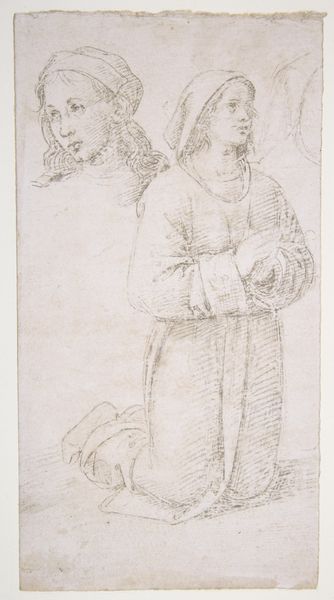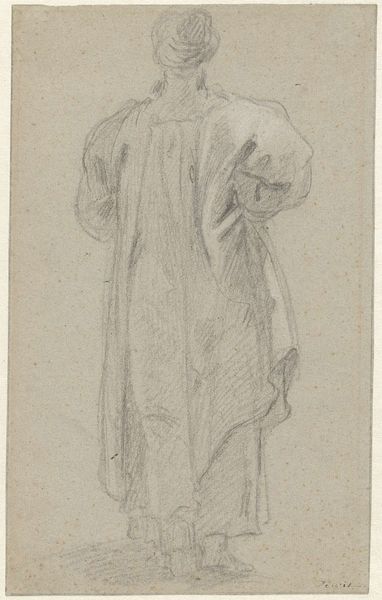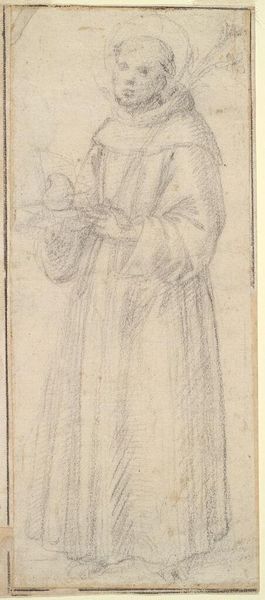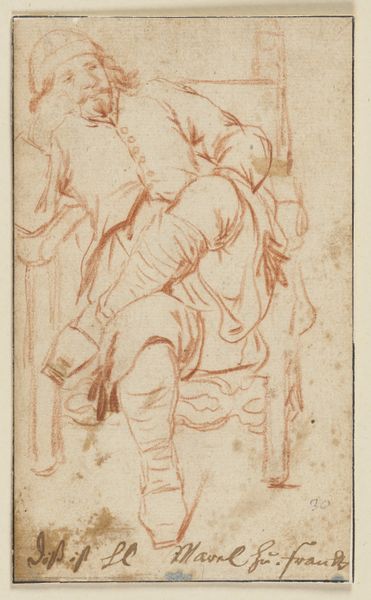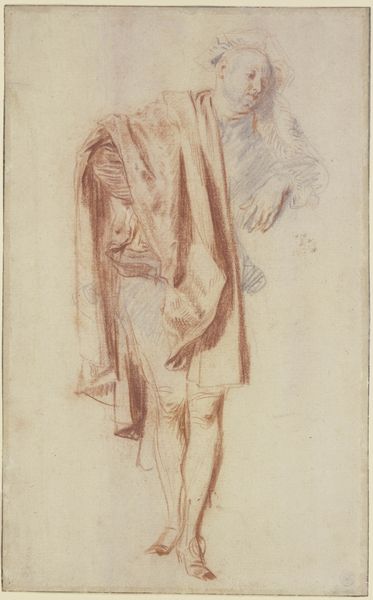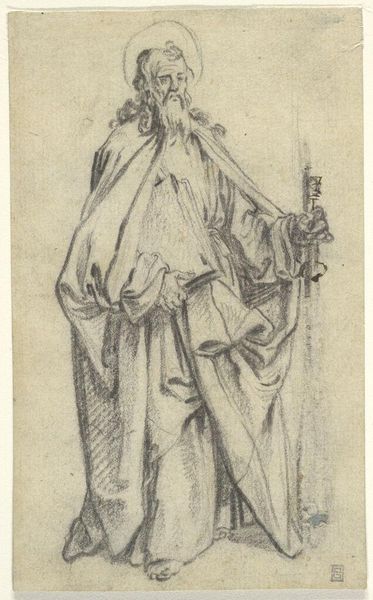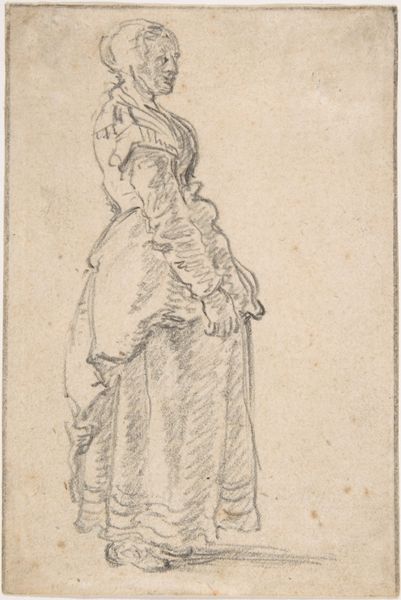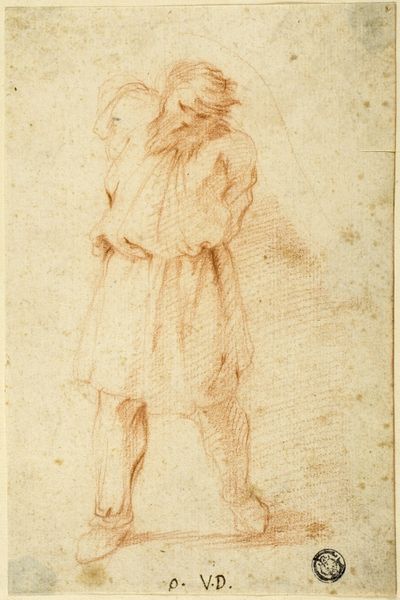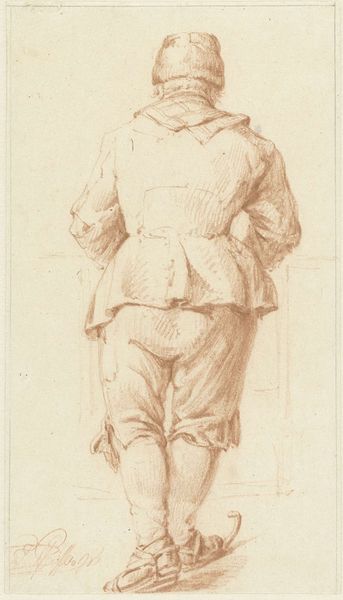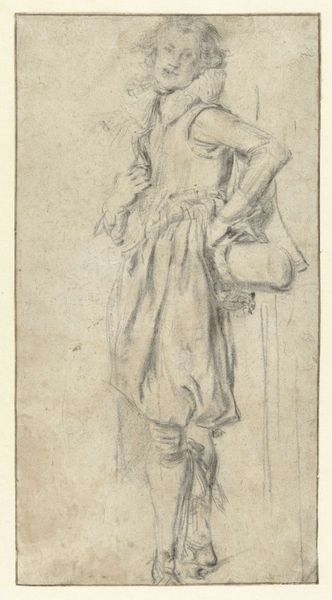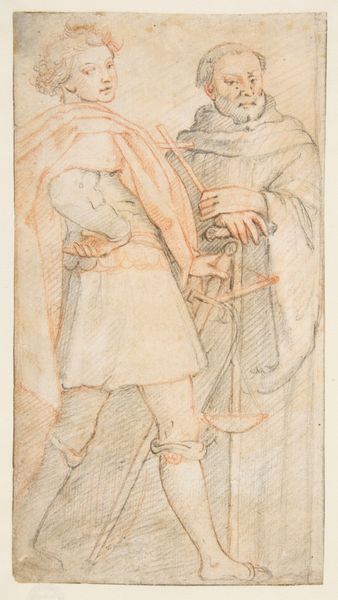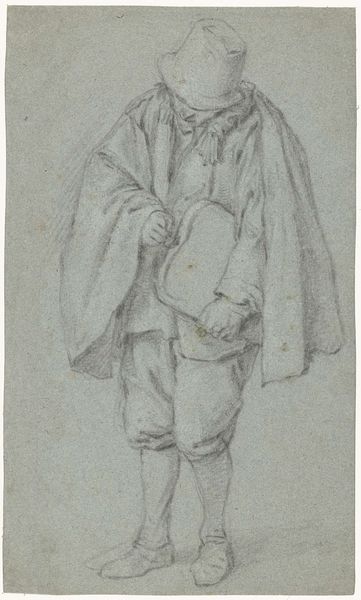
drawing, paper, pencil
#
portrait
#
drawing
#
amateur sketch
#
toned paper
#
light pencil work
#
quirky sketch
#
pencil sketch
#
incomplete sketchy
#
figuration
#
paper
#
11_renaissance
#
personal sketchbook
#
pencil
#
sketchbook drawing
#
pencil work
#
northern-renaissance
#
academic-art
#
sketchbook art
Dimensions: height 245 mm, width 158 mm
Copyright: Rijks Museum: Open Domain
Curator: Standing before us, we have Lucas van Leyden's "Standing Boy with a Sword," a pencil drawing on paper, dating back to the period between 1508 and 1512. It’s currently housed here at the Rijksmuseum. Editor: It strikes me as a quiet piece, almost dreamlike. The light pencil work gives it an ephemeral quality. He appears to be gazing towards a noble future. The slightly unfinished nature makes me feel a kind of vulnerability, in a strange tension with that sword. Curator: Precisely. The figure and the sword both serve as very well-known, potent symbols in religious artwork from this period and beyond. They create a tension between the material and the spiritual realms and tell us so much about how societies evolve their symbols and expectations for different types of subjects across time. Editor: The question arises: whose expectations? During the Northern Renaissance, art began subtly reflecting the changing status of young males within emerging aristocratic circles, particularly within the context of evolving feudal duties and courtly life. It is also an intimate peek into Van Leyden’s process – who might this young man be? Does the text scrawled at the bottom of the sketch offer clues? Curator: Possibly. We can investigate a cultural narrative surrounding early 16th-century concepts of boyhood through that text, but the sword, of course, takes center stage. It is rendered somewhat larger than it should be. Notice the hat that looks quite similar to those used in ceremonial military rituals. Editor: It begs us to ponder the weight this boy, likely from a privileged class, is being prepared to bear. We must consider what such symbols meant at a time of great religious and social upheaval. Curator: Indeed. Perhaps the most interesting is how potent symbols like these shape a society. Over time the power and weight that we ascribe to particular ideas are directly reflected in the artwork itself. The cultural memory is embedded in drawings such as these. Editor: A poignant exploration of power, duty, and burgeoning identity all sketched on a single sheet of paper. Curator: I concur; it showcases how symbolism acts as a cultural touchstone, bridging historical context and modern reflection.
Comments
No comments
Be the first to comment and join the conversation on the ultimate creative platform.
